Interview
Interview: Mariana Cheniaux
In conversation with Brazilian artist Mariana Cheniaux who is now based in London.
Can you talk about your journey into or interest the arts?
I’m not exactly sure when my passion for drawing started but definitely why it did: my education (both at home and school) had a huge influence on me and on my decision to do arts for living.My parents used to take me to galleries and museums, they believed that culture and learning to self-express was exceptional for me and my sister’s upbringing. This idea made them decide to put us in a more constructivist school, where arts and craft were encouraged. I did theatre and music classes there, but I was quite bad at them.
For me the thing was always drawings, I used to draw so much, that is how I remember, whenever was possible I drew: in between classes (or during them), for the school newspaper, with my friends, when I was sleepless – a pen and paper was what I needed. It was a huge part of my life but I didn’t think would be my career back them. It was only when I was 17 that I had to make a decision, choose a university. I had some doubts on going to a more creative area at first, so I tried a couple of different things but, in the end, illustration was what I needed to do, it was my true self.
Do you use a sketchbook? I’m interested in what a sketchbook means to you and your work? or how people develop their ideas.
I have a very weird relation with sketchbooks, it is quite a love and hate dynamic. Although I normally carry one with me, I’m not always using it as I wished. There are days where I have to put everything down, others that I don’t even want to look into it.
For me, my sketchbook is an extension of myself (of memories, thoughts and boredom). Very often I come back to my old ones; it is almost like talking to myself from that time. Saying that, it is more interesting for my work to write and put my thoughts on those blank pages than to do actual drawing as I used to do. It can be about anything that matters for me, a conversation, a dream, a feeling, the important part is to have a memento. This is for me the most exciting part; these are the words are the ones that give me ideas and make me always be in contact with myself.
I still draw on them, but it is not a restriction anymore. My sketchbook needs to be as messy as my mind, I glue stuff, I skip pages, I do whatever I want, it is scary and beautiful, lovable and hateful.
Can you talk about the influences upon your work?
That’s a hard one. I guess that the moment influences me, where I am, what is going on with the world and with me, and what is going on my mind. I guess that creativity comes out from unexpected places: the other day I saw a meme with a capybara and now I can’t stop painting them it.
Now I realise that the most interesting thing for me is human nature, humans and nature. I usually draw plants and people, normally women, it is very empowering to make them as natural as they are. These two themes are very current for me as an almost universal language. When I get stuck, I draw my plants or myself, it is almost a law.
Other artists provide a huge influence on me: even though there is not a specific person that I look upon, they are my biggest inspirations. Usually, the artwork that appears on my feed or the last exhibitions that I’ve seen stays in my mind and throughout my work, and I keep coming back to them.
Can you talk about your process of working? How do you work, how often, is there a particular pattern?
My process is still in development, as my work. Since I chose to do illustration as my career and began studying it, I took it much more seriously. Before that, I used to have an idea, search a bit, get a bit of reference to do it and it was done. Now, depending on what I’m doing, I have a much longer and more detailed process. I research much more, I do collaborations and ask for feedback, I come back to old drawings and ideas, I experiment.
If it is a very big project, after the idea, I go to research, to the brief and look for others that did something similar. I search for things related to my theme, such as movies, plays, songs. Then it is the sketching part where I do different experimentations and try different media. Putting the first idea together with everything else, I try to build an outcome. Sometimes I need to come back to it later, to take of a distance and to have another look to it.
I try to work everyday but for me, it’s unreal to keep a schedule. I try to balance my will and my deadlines the best way that I can which lead me to procrastinate and doing more research then I need.
Do you find the process of creating work relaxing or therapeutic? I’ve become increasingly interested in the relationship of the sketchbook and the work to the artist.
As a kid, it was very therapeutic, it was a hobby and my way of communicating. Since I decided to take it more seriously, I began to put much more pressure on myself and the outcomes. It still can be relaxing if I’m doing just for myself or if I’m trying something new, but it will no longer be how it used to be. For me, now this is not exactly a problem, it makes me realize how to work better, to concentrate and to improve my skills. I still can put a lot of my feelings in art, I can overflow my emotions and get less stressed, but it is not the only thing that I do. Both my mind and my heart need to be working to create something that matters to me.

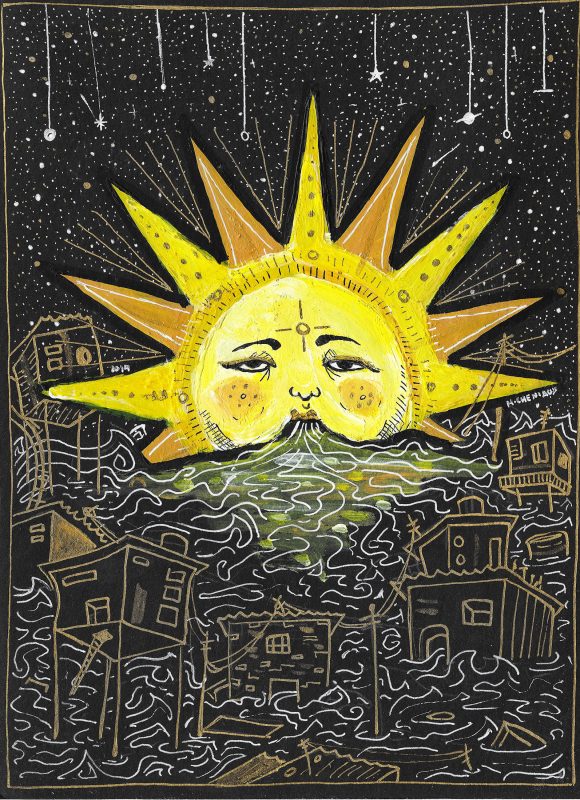
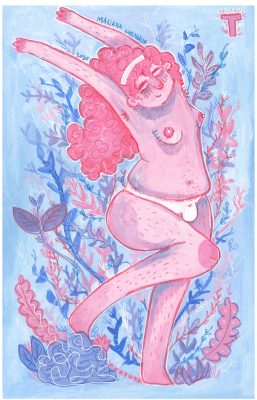
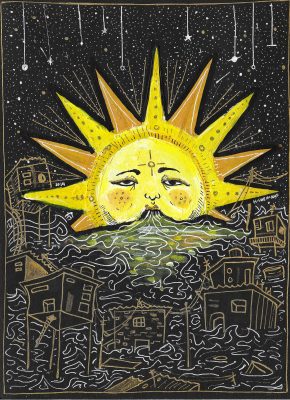
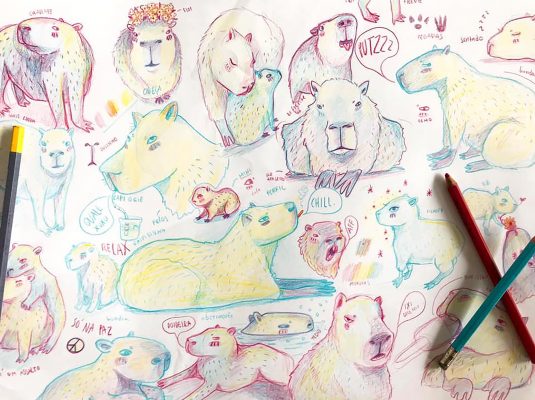
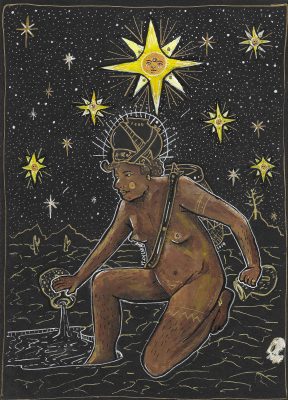
Do you like this artist?
If so, why not write a comment or share it to your social media. Thanks in advance if you can help in this way.